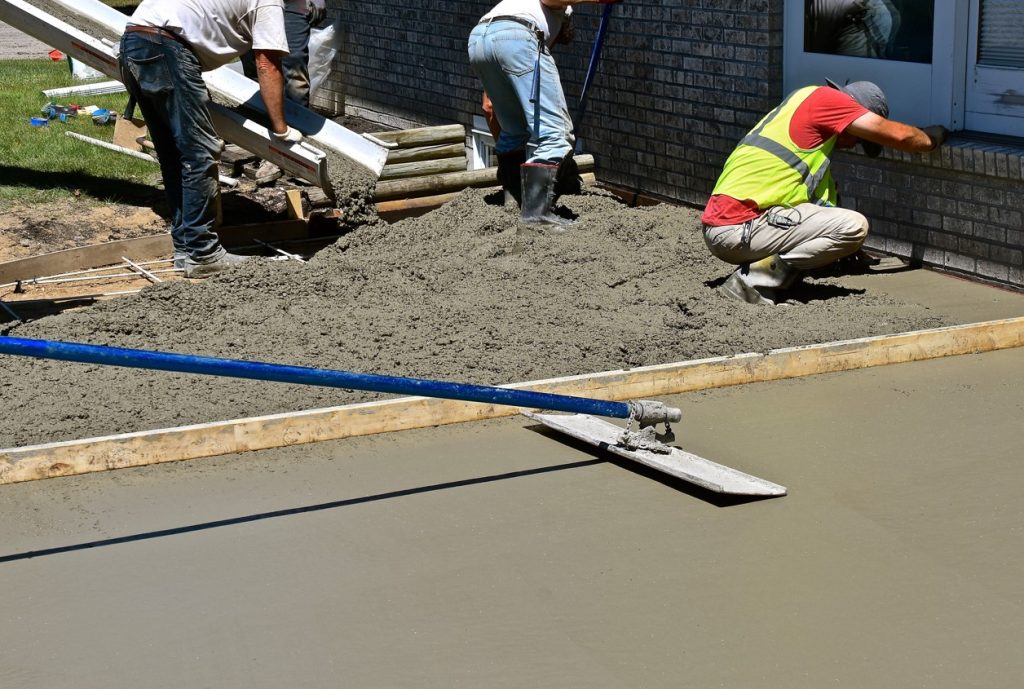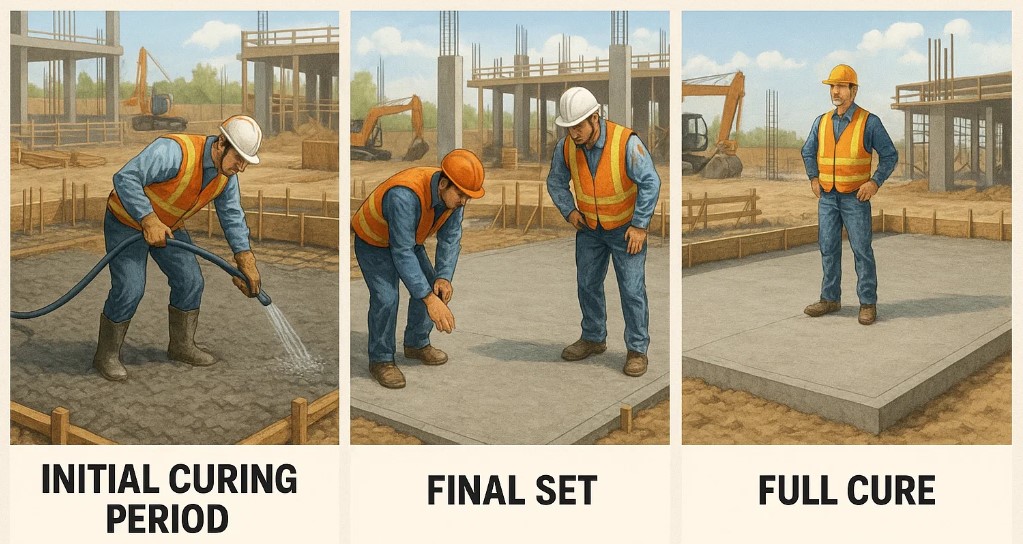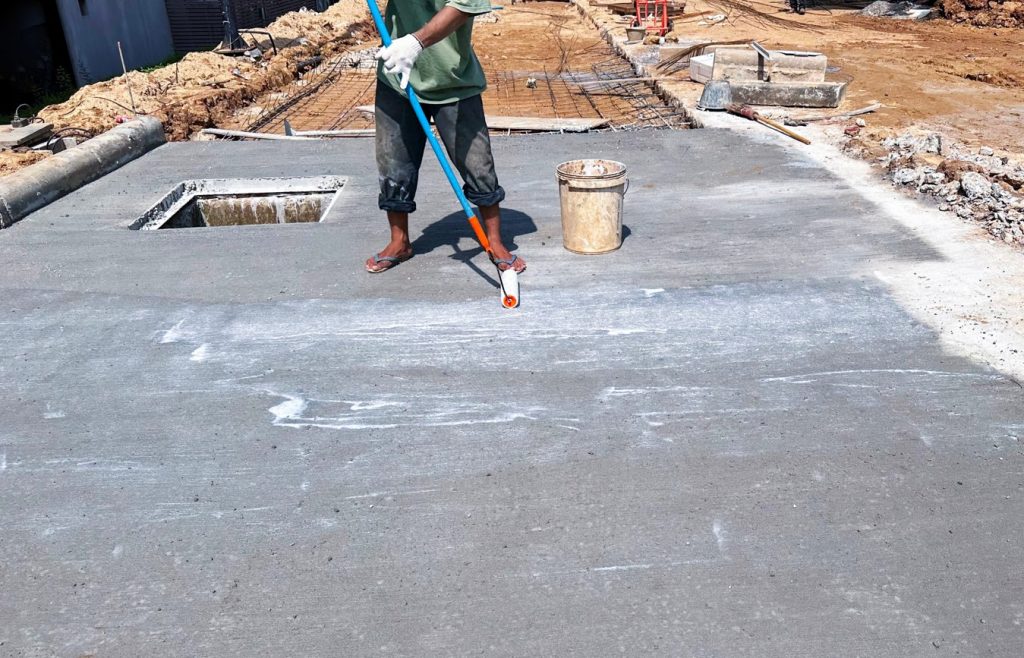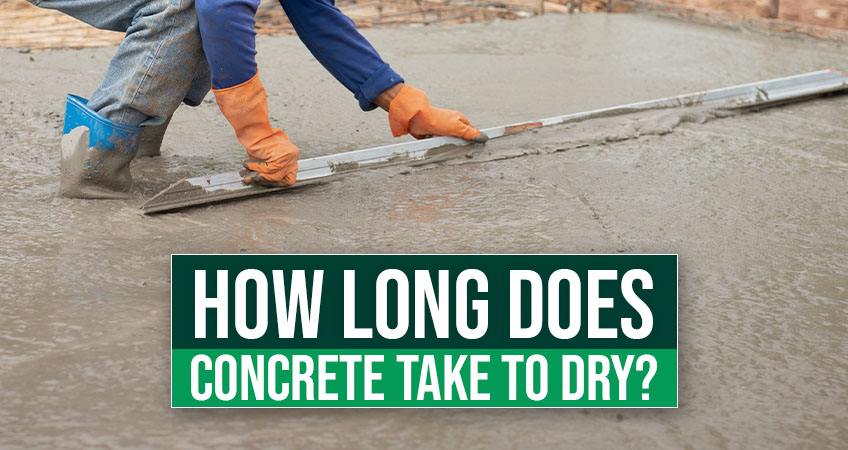Whether you’re laying a new patio, building a driveway, or working on a large construction project, understanding concrete cure time is crucial for project success. Getting the timing wrong can lead to cracked surfaces, weakened structures, and costly delays.
At Mix-N-Go, we supply ready mix concrete and pump concrete to both professional contractors and DIY enthusiasts. Through years of experience, we’ve learned that one of the most common questions our customers ask is: “How long does concrete take to dry?” The answer isn’t as straightforward as you might think.
While concrete may appear solid within hours of pouring, the curing process continues for weeks. The timeframe depends on several factors, from weather conditions to the specific concrete mix used. Understanding these variables will help you plan your project timeline effectively and achieve the best possible results.
Main factors affecting concrete setting time

Several key factors influence how long concrete takes to set and cure. Understanding these variables will help you better estimate your project timeline and take appropriate measures to optimise the curing process.
Temperature
Temperature plays a significant role in concrete curing speed. Warmer conditions accelerate the chemical reaction between cement and water, causing concrete to set faster. Conversely, cold weather slows the process considerably.
In ideal conditions (around 20°C), concrete follows standard curing timelines. However, if temperatures drop below 5°C, the curing process can slow dramatically or even stop altogether. On the flip side, extremely hot weather (above 30°C) can cause concrete to set too quickly, potentially leading to cracking and reduced strength.
Humidity
The moisture level in the air affects how quickly water evaporates from the concrete surface. High humidity slows down the drying process, while low humidity can cause the surface to dry too rapidly, potentially leading to surface cracks.
Maintaining adequate moisture during the curing process is essential. This is why professional contractors often cover fresh concrete with plastic sheeting or apply curing compounds to retain moisture and ensure proper strength development.
Concrete mix/concrete strength
Different concrete mixes have varying curing characteristics. The water-to-cement ratio, aggregate type, and any additives all influence drying time. Mixes with higher cement content typically set faster but may generate more heat during curing.
Ready mix concrete from concrete contractors is formulated to specific standards, ensuring consistent performance and predictable curing times. Our experienced team can recommend the right mix for your specific project requirements and environmental conditions.
Stages of concrete drying

Understanding the different stages of concrete curing helps you know when it’s safe to proceed with each phase of your project. The process involves several distinct phases, each with its own timeline and characteristics.
Initial curing period
The initial set occurs when concrete begins to harden and lose its plastic properties. This typically happens within 1-2 hours of mixing, though this can vary based on temperature and mix design. During this stage, the concrete is still workable but beginning to stiffen.
It’s important to complete all finishing work, such as smoothing surfaces and creating joints, before the initial set begins. Once this stage starts, disturbing the concrete can damage its structure and final appearance.
Final set
The final set marks the point when concrete has hardened sufficiently to resist penetration. This usually occurs 4-6 hours after mixing under normal conditions. After final set, the concrete continues to gain strength through the hydration process.
Full cure
While concrete reaches its final set relatively quickly, achieving full cure takes much longer. This is when the concrete develops its designed strength and durability characteristics. The curing process continues for weeks, with the most significant strength gains occurring in the first 28 days.
Concrete curing time: What to expect

Understanding the timeline for concrete strength development helps you plan when different activities can safely take place on your newly poured concrete.
24-48 hours: Initial strength
After 24-48 hours, wet concrete has typically cured enough to support light foot traffic. The surface should feel firm to the touch, and you can walk on it without leaving marks or causing damage. However, avoid dragging heavy objects or applying concentrated loads during this period.
This timeframe applies to standard concrete mixes under normal weather conditions. Cold weather can extend this period significantly, while warm conditions may allow for earlier light use.
7 days: Substantial strength development
By the seven-day mark, concrete has achieved approximately 70% of its ultimate strength. This milestone represents a significant step in the curing process, though the concrete continues to strengthen over the following weeks.
At this stage, the concrete can typically handle moderate loads and normal use, making it suitable for most residential applications. However, heavy structural loads should still be avoided until full curing is complete.
28 days: Near full strength
The 28-day mark is considered the standard measure for concrete strength in the construction industry. At this point, concrete has achieved approximately 95% of its ultimate strength, though the curing process continues indefinitely as long as moisture is present.
This timeline represents the minimum period for removing structural supports and applying full design loads. For critical applications, some projects may require even longer curing periods to ensure maximum strength and durability.
Getting your concrete timing right
Understanding how long concrete takes to dry is essential for any successful project. While the basic timeline of 24-48 hours for initial use, 7 days for substantial strength, and 28 days for full cure provides a good framework, remember that actual times can vary based on temperature, humidity, and mix design.
The key to success lies in proper planning and patience. Rushing the process rarely leads to better results and often compromises the final product’s quality and longevity. By allowing adequate time for each stage of curing, you’ll ensure your concrete project delivers the strength and durability you expect.
Frequently asked questions
Can I speed up concrete curing?
While you can’t drastically accelerate the curing process, certain curing methods can help optimise conditions. Maintaining adequate moisture, controlling temperature with curing blankets in cold weather, and using proper curing compounds can all support efficient curing. However, rushing the process often leads to reduced strength and durability.
What happens if concrete dries too quickly?
Rapid drying can cause surface cracking, reduced strength, and poor durability. This often occurs in hot, windy conditions or when concrete is exposed to direct sunlight. Proper curing techniques, such as covering with plastic sheeting or applying curing compounds, help prevent rapid moisture loss.
How can I tell if concrete is ready for use?
Visual inspection can provide some clues, but the best indicator is following established timelines based on your specific conditions. The concrete should appear uniformly coloured without wet spots, feel firm to the touch, and not show impressions from light pressure. Conversely, uncured concrete will be mottled and wet or sticky.
Does rain affect how long concrete takes to cure?
Light rain on fully cured concrete (after final set) can actually be beneficial by providing moisture for continued curing. However, heavy rain on fresh concrete can damage the surface and wash away cement. If rain is forecast, protect fresh concrete with plastic sheeting or tarpaulins.
Can I apply sealers immediately after concrete sets?
Most sealers should not be applied until concrete has cured for at least 7-28 days, depending on the product. Applying sealers too early can trap moisture and prevent proper curing, potentially reducing the concrete’s final strength.
Ready to start your concrete project — speak to our concrete specialists today!
At Mix-N-Go, we’re committed to helping you achieve the best possible results for your concrete projects. Our experienced team understands the intricacies of concrete curing and can provide expert guidance tailored to your specific needs and local conditions.
Contact Mix-N-Go today for professional advice and a free quote. Our team of concrete specialists will help you choose the right mix for your project.
Don’t leave your concrete project to chance – get in touch with the experts who understand how to deliver quality results every time.



